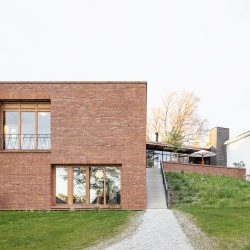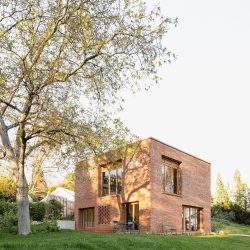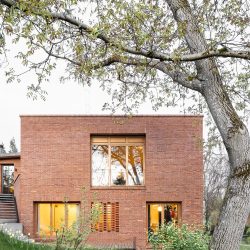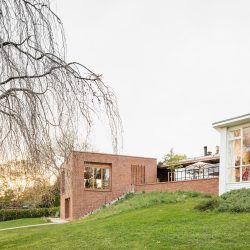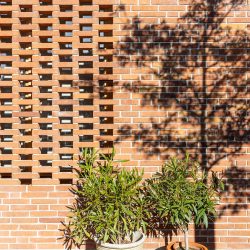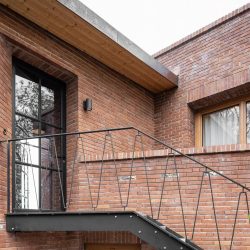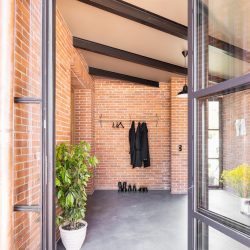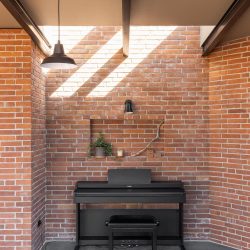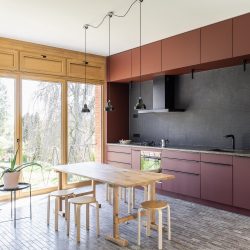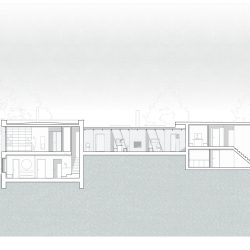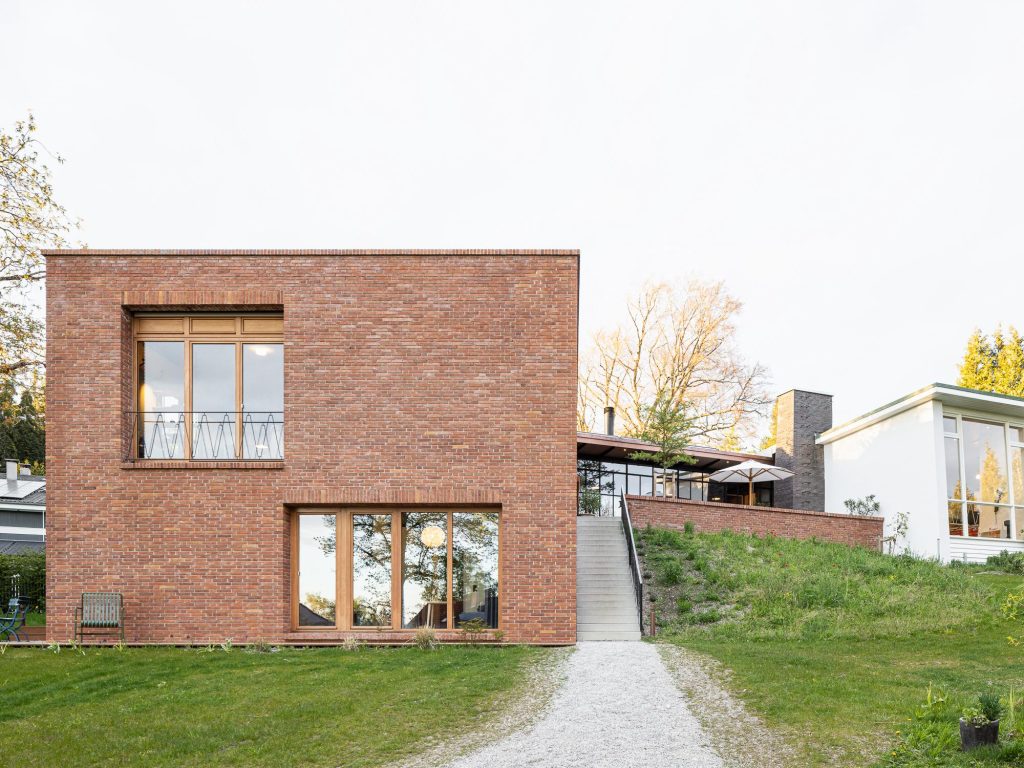
Tschinkersten ARCHITEKTEN . photos: © Tschinkersten
In this project the single-family home concept was rethought in a simple and sustainable way: by carefully renovating and respectfully extending a bungalow from the 1950s with a modern clinker brick building, an ensemble of old and new buildings was created on a hillside plot in Feldafing for several generations in the changing phases of life.
The existing single-storey building, originally designed as a studio house, had become too small for the family of four with its 90 square meters of living space. The atypical but historically valuable building was not a listed monument but seemed to the architects to be worth preserving due to its special architecture. The task was to preserve the existing building in its typical period charm and to create additional living and working space for the family and future generations with the extension. At the same time, no additional ground surfaces were to be sealed on the generous south-facing plot.
The cube-shaped new building is connected to the existing building via an intermediate structure and a terrace, at a respectful distance and in a rotated arrangement. In this way, the design creates a communicative space between the two structures and visual connections between the old and new buildings, but without allowing direct views into the private rooms. In order to emphasize the relationship between the two buildings, elements of the historic existing building were incorporated into the exterior and interior of the new building. For example, the new building was given a brick façade in reference to the brick exterior chimney of the old building. Brick was also chosen for the terrace and conservatory. In addition, the style of the steel railings in the old building is repeated in the window parapets of the new building, so that the three structures together form a coherent unit and a harmonious appearance.
The old and new buildings function as an ensemble, but also as separate units. The building structure can adapt flexibly to changing usage requirements and can be used by several parties and/or generations in the long term as life phases change: the energy-efficient new building currently serves as a residential building and the historic old building as a work studio with a guest area. Both buildings have their own entrances on the east and west sides and share the space in between and the terrace when used separately. This configuration allows both parts of the building to have a clearly assigned but not separate garden area. Like a winter garden, the intermediate building is planned as a cold room, so that the heated area is minimized and at the same time a communal meeting space is created, which, thanks to the open fireplace, offers a year-round quality of stay.
The compact new building does not tower over the existing building in terms of its footprint or height. Instead, it makes use of the topography of the plot and accommodates a second full residential storey on the slope. By placing the cube on an area previously occupied by a dilapidated pool house from the 1990s, the spaciousness of the garden was preserved while still creating sufficient living space in a maximally compact volume.
With its large openings, the new building is oriented in three directions. By pulling the clinker bricks into the reveal, the façade was given an impressive plasticity. The deep window reveals also provide constructive protection from the sun and weather. The large windows can be opened almost completely, so that the interior relates to the exterior or can be extended to it. Four blocks divide the entrance and upper floors. They contain furniture that creates functional spatial units. The spacious cooking, living and dining area stretches between the four blocks. In the basement, there is an open-plan bathroom, three bedrooms, each with its own garden access, and a utility room facing the slope.
In the interior, the focus is on the use of high-quality, natural materials: solid oak floors are used in the rooms, while local shell limestone was used in the living and dining areas and in the open-plan bathroom in the same dimensions as the clinker bricks, laid in a uniform pattern in the bathroom and in a staggered pattern in the living and dining areas. With the mosaic tiles in the WCs, another element from the existing house was cited. Breathable lime plaster creates a pleasant indoor climate throughout the house. Unfilled vertically perforated bricks were used in the construction. Together with the solid clinker bricks placed in front, this created a wall structure over 50 cm thick with a high thermal storage mass, which largely dispensed with the need for conventional insulation materials. The garage and the rear wall of the conservatory, on the other hand, are built entirely of clinker bricks. This solid construction with just one layer makes it easier to add on and extend. The fired bricks are also very easy to dismantle and recycle.
With the realization of the extension, it was possible to create aesthetically and architecturally sophisticated living space that adapts to the historically valuable existing building, taking into account the principles of sustainability, and also enhances its outdoor space from a garden architecture perspective.
_

